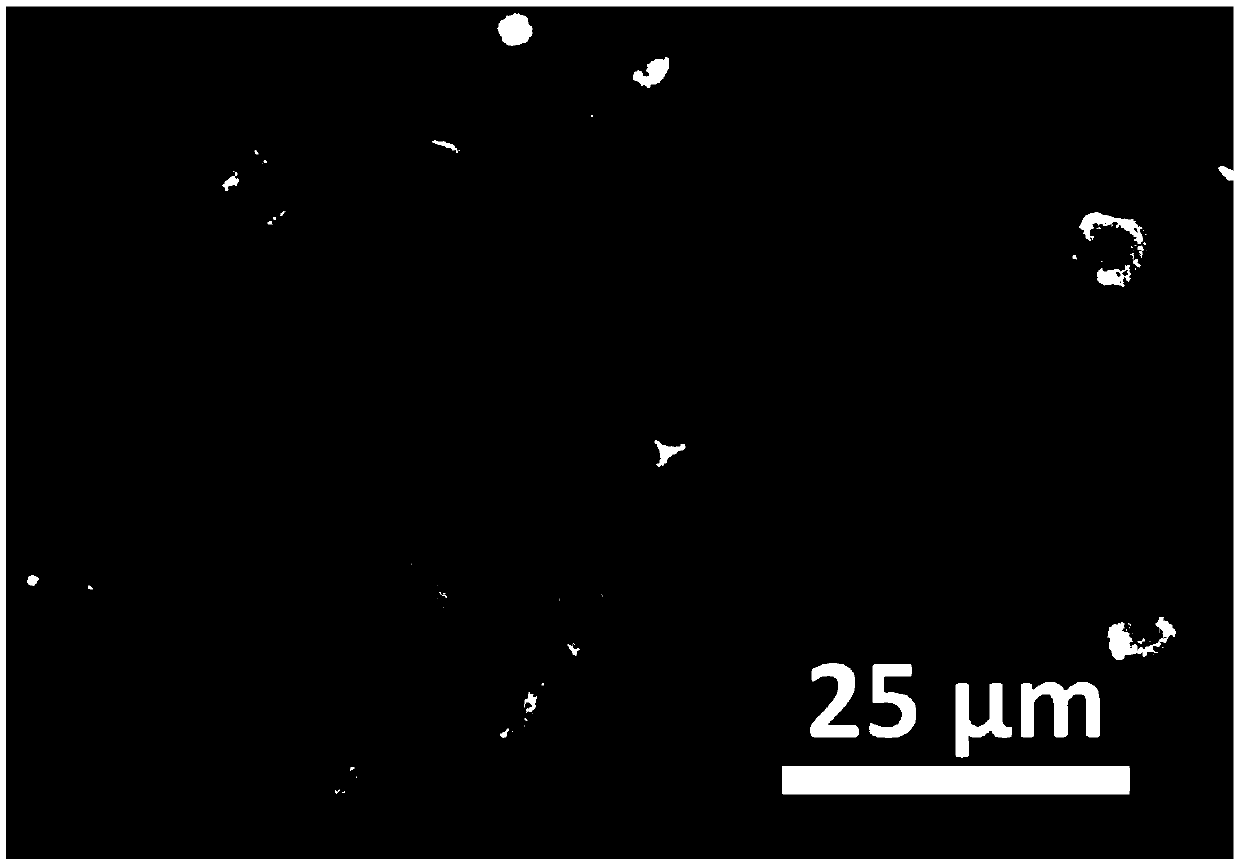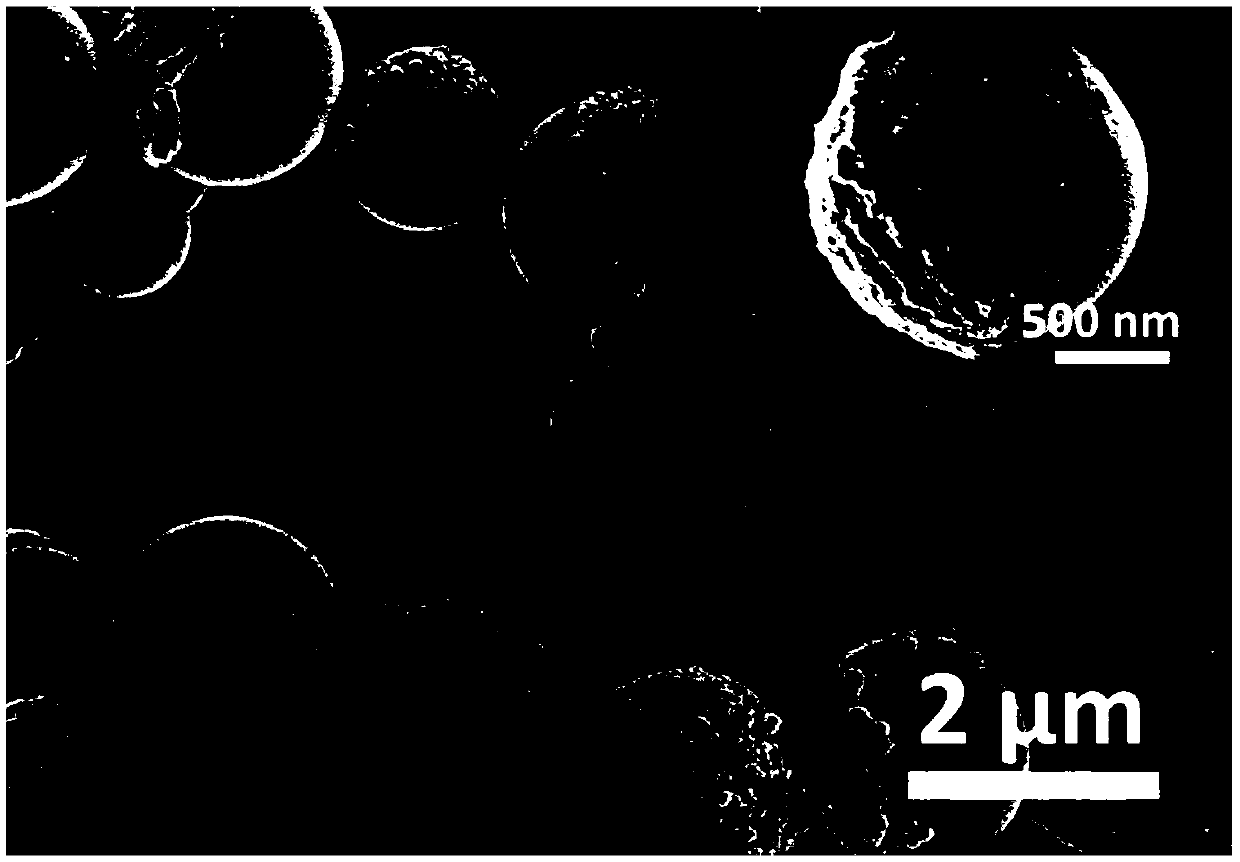Method for preparing Janus particles based on lysozyme nano-film
A technology of nano-film and micro-nano particles, which is applied in the field of preparation of Janus particles, achieves the effect of wide applicability, simple operation, and elimination of complicated operation
- Summary
- Abstract
- Description
- Claims
- Application Information
AI Technical Summary
Problems solved by technology
Method used
Image
Examples
Embodiment 1
[0017] 1. Adjust 10mL of 50mmol / L tris(2-carboxyethyl)phosphine in 4-hydroxyethylpiperazineethanesulfonic acid buffer solution to pH 7.0 with NaOH, and then mix it with 10mL of 2mg / mL lysozyme 4 -Hydroxyethylpiperazineethanesulfonic acid buffer solution is mixed evenly, and then the glass sheet is immersed in the resulting mixture, incubated at room temperature for 5 minutes, so that the surface of the glass sheet is adhered to a layer of lysozyme nano-film, and finally cleaned with deionized water to obtain Glass slides modified with lysozyme nanofilms.
[0018] 2. Uniformly disperse a layer of polystyrene microsphere dispersion liquid with a particle size of 10 μm on the surface of the glass sheet modified by the lysozyme nano-film, and then vacuum-dry it to obtain a glass sheet adsorbing the polystyrene microsphere.
[0019] 3. Adjust 10mL of 50mmol / L tris(2-carboxyethyl)phosphine in 4-hydroxyethylpiperazineethanesulfonic acid buffer solution to pH 7.0 with NaOH, and then m...
Embodiment 2
[0021] 1. Adjust 4-hydroxyethylpiperazineethanesulfonic acid buffer solution of 10mL 40mmol / L tris(2-carboxyethyl)phosphine to pH 7.5 with NaOH, and then mix it with 10mL 2mg / mL lysozyme 4 -Hydroxyethylpiperazineethanesulfonic acid buffer solution is mixed evenly, and then the glass sheet is immersed in the resulting mixture, incubated at room temperature for 5 minutes, so that the surface of the glass sheet is adhered to a layer of lysozyme nano-film, and finally cleaned with deionized water to obtain Glass slides modified with lysozyme nanofilms.
[0022] 2. Uniformly disperse a layer of polystyrene microsphere dispersion liquid with a particle size of 1.5 μm on the surface of the glass sheet modified by the lysozyme nano-film, and then vacuum-dry to obtain a glass sheet adsorbing the polystyrene microsphere.
[0023] 3. Adjust 10mL of 40mmol / L tris(2-carboxyethyl)phosphine in 4-hydroxyethylpiperazineethanesulfonic acid buffer solution to pH 7.5 with NaOH, and then mix it wi...
Embodiment 3
[0025] In this embodiment, the polystyrene microspheres in Example 1 are replaced with silica microspheres with a particle size of 2 μm, and the other steps are the same as in Example 1. The obtained Janus microspheres are as follows: Figure 4 shown.
PUM
 Login to View More
Login to View More Abstract
Description
Claims
Application Information
 Login to View More
Login to View More - R&D
- Intellectual Property
- Life Sciences
- Materials
- Tech Scout
- Unparalleled Data Quality
- Higher Quality Content
- 60% Fewer Hallucinations
Browse by: Latest US Patents, China's latest patents, Technical Efficacy Thesaurus, Application Domain, Technology Topic, Popular Technical Reports.
© 2025 PatSnap. All rights reserved.Legal|Privacy policy|Modern Slavery Act Transparency Statement|Sitemap|About US| Contact US: help@patsnap.com



